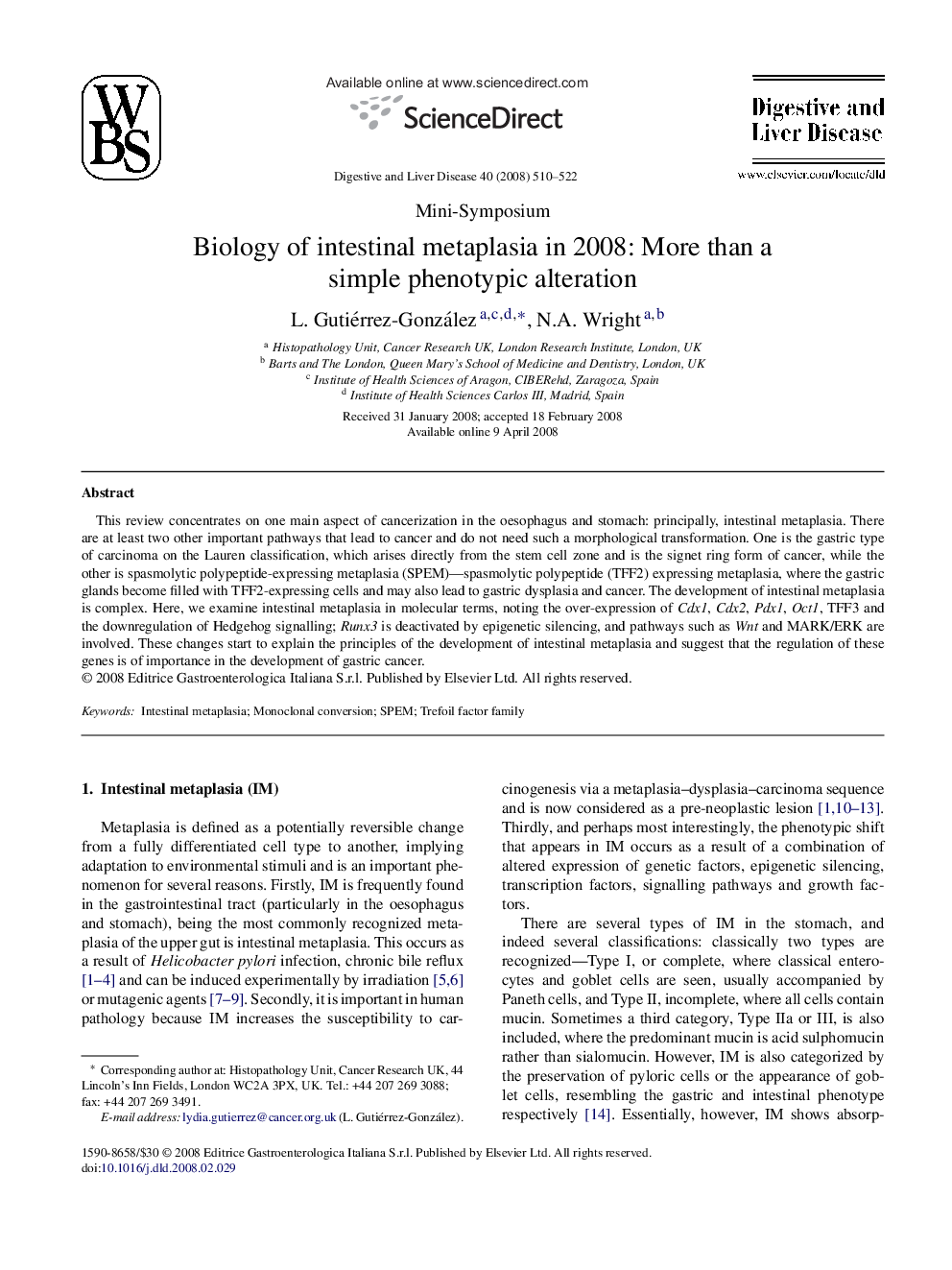| Article ID | Journal | Published Year | Pages | File Type |
|---|---|---|---|---|
| 3265182 | Digestive and Liver Disease | 2008 | 13 Pages |
This review concentrates on one main aspect of cancerization in the oesophagus and stomach: principally, intestinal metaplasia. There are at least two other important pathways that lead to cancer and do not need such a morphological transformation. One is the gastric type of carcinoma on the Lauren classification, which arises directly from the stem cell zone and is the signet ring form of cancer, while the other is spasmolytic polypeptide-expressing metaplasia (SPEM)—spasmolytic polypeptide (TFF2) expressing metaplasia, where the gastric glands become filled with TFF2-expressing cells and may also lead to gastric dysplasia and cancer. The development of intestinal metaplasia is complex. Here, we examine intestinal metaplasia in molecular terms, noting the over-expression of Cdx1, Cdx2, Pdx1, Oct1, TFF3 and the downregulation of Hedgehog signalling; Runx3 is deactivated by epigenetic silencing, and pathways such as Wnt and MARK/ERK are involved. These changes start to explain the principles of the development of intestinal metaplasia and suggest that the regulation of these genes is of importance in the development of gastric cancer.
